A French drain is a clever technique to direct water away from the house while keeping it safe. Unfortunately flooding unfortunately happens too regularly these days and very costly to remediate.
To send water down the hill, a trench with weeping tile is dug. Unfortunately, contractors demand high fees for this work. Making a french drain may appear easy, but mistakes might lead to the complete opposite of what you want and flood your home.
We decided to compile a list of typical french drain errors in order to prevent costly blunders and project redos. It might instruct homeowners on how to correctly complete DIY projects without spending additional money and warn contractors of things to be cautious about.
Not Knowing Zoning Regulations

Your French drain must not adversely affect anyone’s property or a public space. Both of these situations can result in legal issues. For these reasons, you should consult your local building authorities.
Your area’s drainage initiatives may be hampered by zoning restrictions, community regulations, or building codes. As a result, it’s critical to verify your designs with any relevant municipal zoning, building, or homeowner’s authority.
Additionally, before you start the job, you should use the 8-1-1 “Call Before You Dig” hotline. In order to prevent you from unintentionally digging into an underground utility line, the appropriate authorities will mark your land with paint or a flag.
Forgetting to Do Locates

It’s crucial to do this task before you start digging. Although we are aware that trenches should never be deeper than 4 feet and never cross utility lines, the primary guideline of building projects is to always be safe.
It’s simple to remember to dial 811, but it’s also simple to forget to do so. Larger businesses employ inventive tactics to remind each team to get locates before beginning any dig. By placing a notice on the truck, having a morning safety discussion, and making safety training for employees essential, the initial french drain error may be avoided.
We are aware that drain firms seldom grow to a size where a dedicated budget for the department of health and safety exists. Make it necessary to inspect each morning in order to safeguard all employees and the business from fines for damage service lines (gas, water, and electrical cables).
Not Checking the Depth of Your Drain
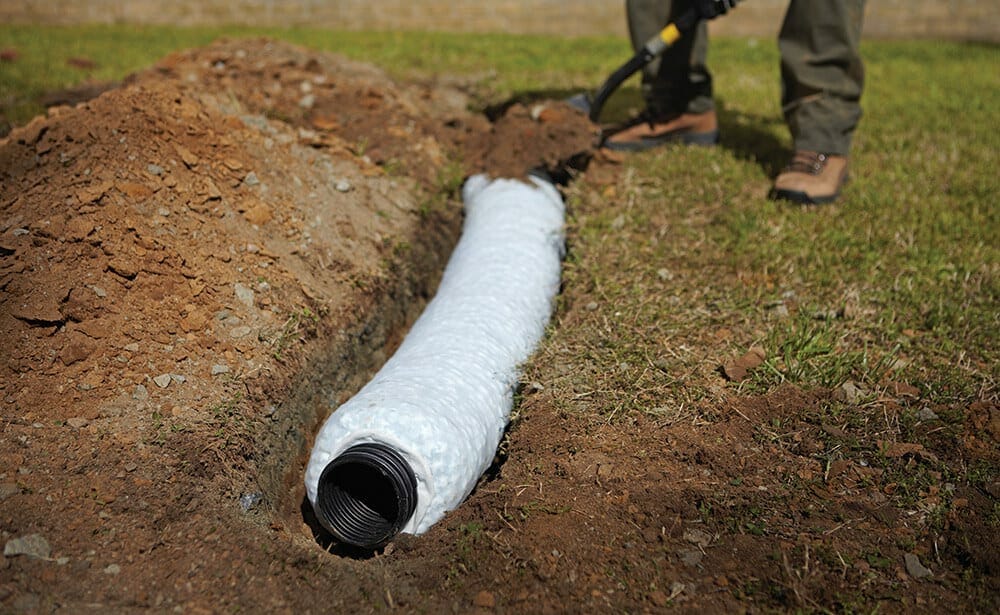
A drainage system that gathers water from a surface is known as a french drain. To do this, either dig a hole and install a perforated pipe, or build the drain out of prefabricated materials.
The depth of a french drain should be determined by the kind of soil, slope of the area, and kind of plant that will be growing there. The depth of your trench and how quickly the soil will absorb water depend on the texture of the soil.
When building your french drains, you should also consider the depth of your drainage pipe since it will have an impact on the water flow rate through your system. In regions where there are elevation variations, a shallower pipe may create extra pressure, whereas a deeper pipe may enable more water to go through with less pressure.
Overlooking the Direction of Water Flow
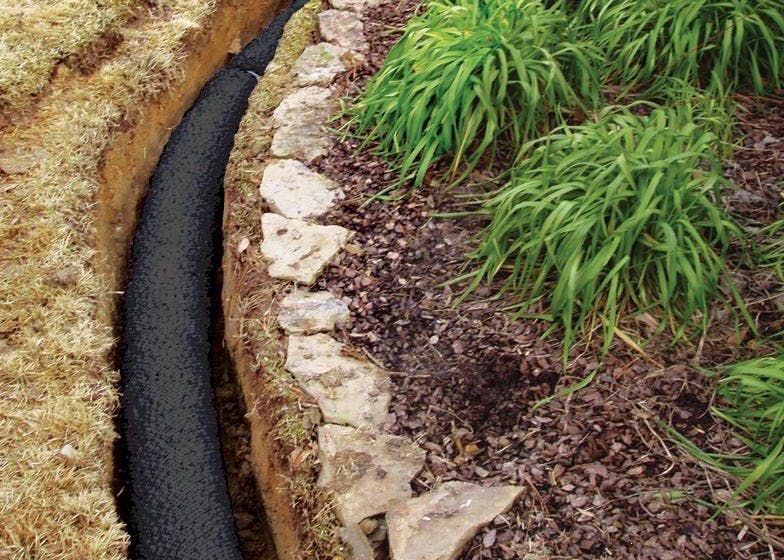
Here, you should evaluate your yard’s flood-prone zones. Before you begin designing, you must choose a basic direction for the flow of your French drain. Water should flow away from your property in the proper direction.
Consider the disadvantages of having exposed gravel in your yard as well. You should consider, for instance, how it impacts driving. You could also think about how the gravel would impact your yard’s views and recreational spaces.
Incorrect Slope is Among French Drain Mistakes

Let’s begin once more at the beginning. The objective of a French drain is to guide water away from the home without using a motor or pump.
Water must therefore be absorbed, and trench mechanisms down the slope. The phrase “produce continuous and positive slope of 2 – 4%” might also be used.
Simple trenching and water collection can result in immediate flooding and long-term structural issues for the home. Water will undoubtedly harm the foundation wall if it persists.
Engineers and qualified professionals recommend a French drain slope of at least 1 percent, but we prefer somewhat more. This is because dirt and sand build up inside pipe walls, and the steeper slope makes it simpler to push them through.
Installing weeping tile two to four inches lower every ten feet will make it simpler. There are certain projects that have challenging altitudes and a finite height. There, we advise a slope of at least 1 percent, but preferably more.
Not Leveling the Ground Around Your French Drain
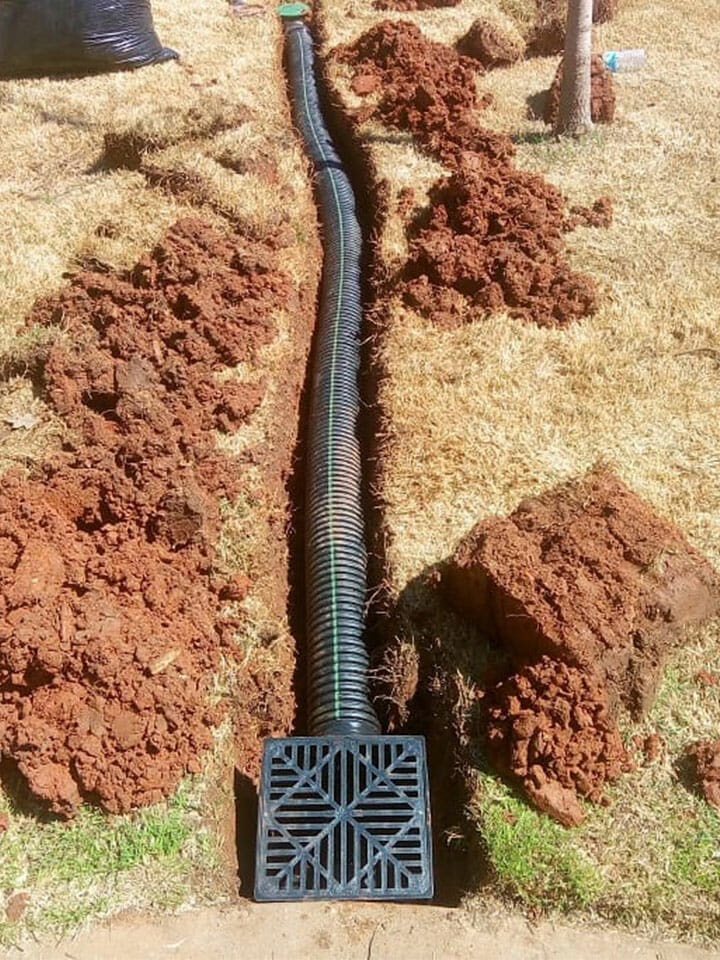
A french drain should have flat ground all around it. To prevent water from leaking out of the pipe, the ground should be level around a french drain. Water will be possible to seep through and leak out of the pipe if the ground is not level. Both a slope and an inclination are possible for the ground.
A trench that has been constructed to collect surface water and divert it away from the foundation of your property is known as a french drain. Gravel, sand, stones, or other materials with drainage properties are used to fill the trench. Storm water management or subsurface drainage systems are other names for french drains.
Missing Drain Fabric

The lack of fabric to prevent the pipe from being clogged with dirt and other debris is the next error on our list of common French drain installation faults.
A buildup of dirt and tiny rocks can completely obstruct a weeping tile, causing water to flow in the other direction, back toward the house. The alternative to this is to have no french drain at all. Trees, roots, and the landscape are all susceptible to damage.
There are two methods to prevent this disaster, and after a year the owner would call back for a totally redone french drain under warranty.
Not Lining the Trench

The cloth lining of your French drain is also crucial. If at all feasible, utilize a continuous swath.
If not, you can overlap cloth by a minimum of 12″. But it’s crucial to stapling the fabric with staples into the ground at both ends. Fold the excess fabric on both sides as you lay it down so you may trim it afterwards.
Additionally, it’s crucial to overlap the cloth in the intended flow direction. To put it another way, the fabric on the trench’s high side must extend past the fabric on its low side.
Not Putting Weeping Tile
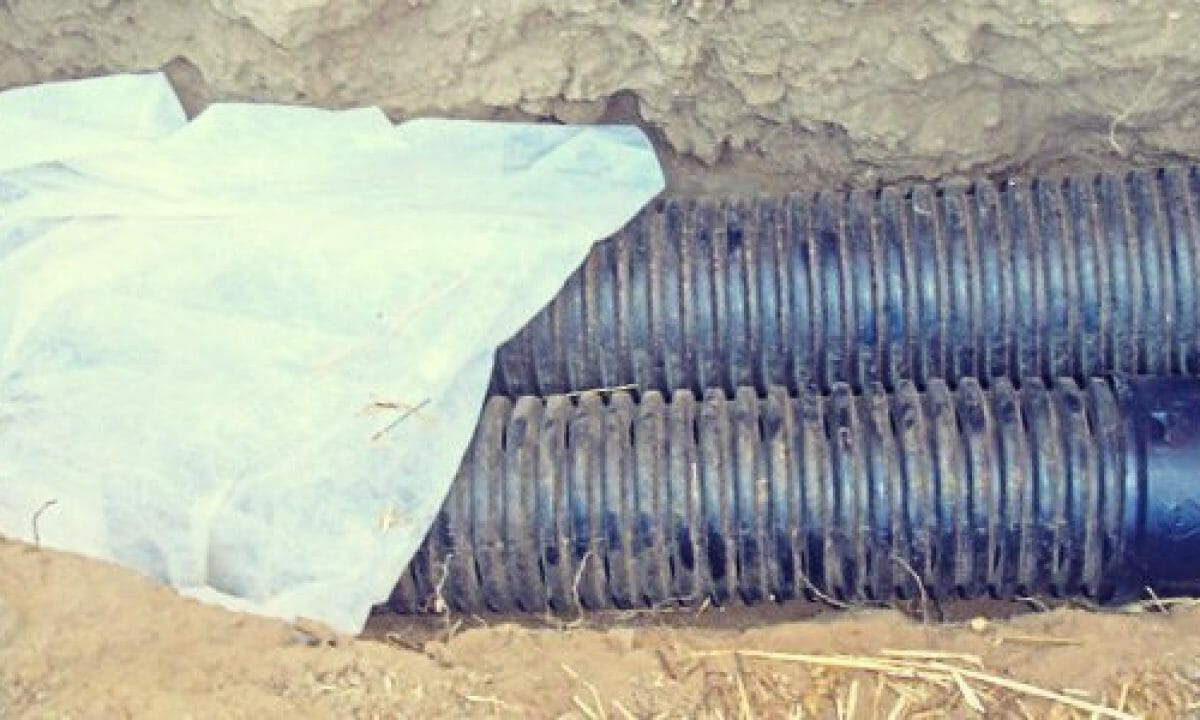
Without weeping tiles, a finished trench is useless. We were shocked numerous times when homeowners sent us pictures of finished french drains that had no weeping tile at all.
Commenting on this error is quite difficult. It is comparable to a vehicle without wheels or a building without a roof. The major tool used in the French drain technique is the weeper, which should never be used for this insane activity.
Evidently, some contractors believed that simply laying down clean gravel would allow water to flow freely beneath. The only issue with it is that it becomes as solid as regular dirt when it interacts with soil.
Some have experimented with inserting genuine plastic tubing with holes in it – Still horrible idea. It does not readily absorb water, and the gravel fills the gaps. In other words, it is pointless and the only thing that will work is weeping tile.
Not Installing Stormwater Drains Near the French Drain
Your home may benefit greatly from the addition of a French Drain. It is a drain that has been put in place close to the home and has the capacity to drain water from the area. But placing these drains close to the French Drain is not always essential.
Some property owners make the error of putting stormwater drainage pipes close to their structures without realizing the potential damage this might bring to their french drain. They wish to avoid flooding in their home at all costs because this may result in it.
When people reside in a region with a lot of rain or water pouring in from outside sources, including lakes or rivers, stormwater drains alongside french drains are frequently erected. To prevent this water from entering a residence and causing flooding or other issues, stormwater drainage pipes are typically placed close to dwellings.
Using the Wrong Gravel

Adequate permeability and drainage depend on the selection of the proper drainage rock. Therefore, you should choose spherical natural stones as fill material.
Better flow through the material will be possible thanks to this type of stone. Additionally, if you use the proper rock, you won’t have to worry about chunks breaking off and blocking the French drain.
In a perfect world, you would look for 1 1/2″ Round Rock. French drains work best with washed round rock.
Whipping Tile Not Connected
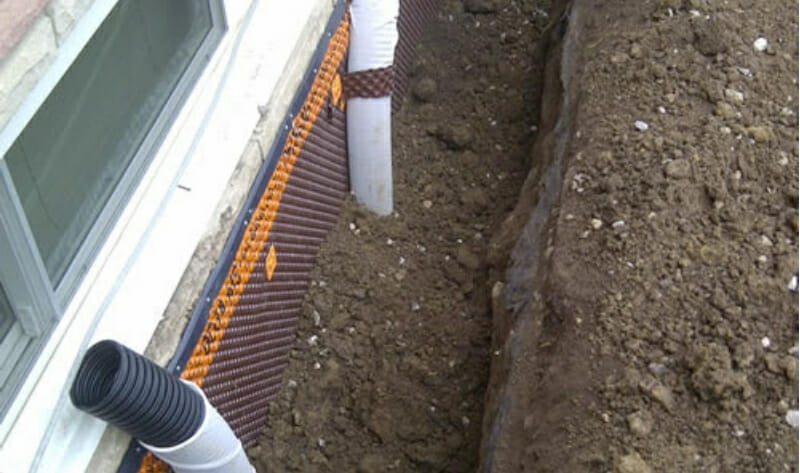
There may be numerous interconnecting ditches in huge projects. Although considerably bigger than a single trench system, it is a french drain nonetheless. Weeping tiles can be joined to another row that gathers water from retaining walls or stone steps when they are on an incline.
The failure to correctly join or secure weeping tile pipes together is a common French drain error that is simple to make but difficult to correct.
Overflow at the time of connection may result from this. A broken connection may cause a blockage in one weeper and a complete leak in another without reaching the water’s departure point.
Such a significant buildup of water may result in subsurface streams that wash away significant amounts of dirt. Further wall and landscape collapse is conceivable.
In order to prevent this, the right connections are utilized. They just link by clicking on the weeping tile together. To cover holes, fabric from the pipe must be pulled over the connection.
Lining a Shallow French Drain with Concrete or Cement
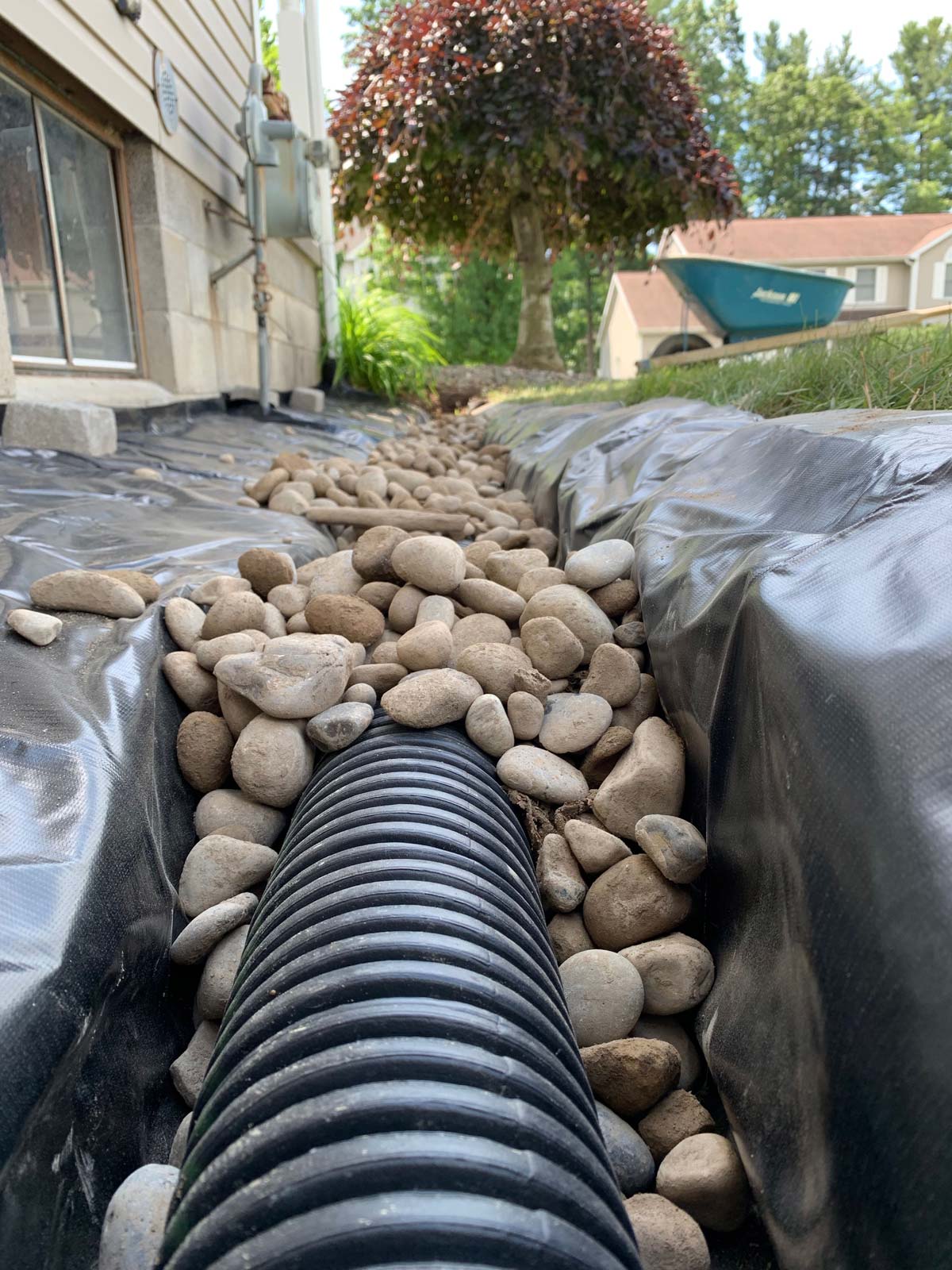
A French drain can be lined in one of two ways. You can either use cement or concrete. The first technique involves completely lining the trench with concrete or cement. For a French drain that will survive for many years and can take all sorts of water, including sewage, without leaking through the walls of the trench, this is the ideal approach.
The second approach entails merely covering the trench’s bottom, followed by a layer of gravel and then another layer of plastic sheeting. Even while the second approach may not last as long as the first, it is still preferable than doing nothing at all.
Misdirecting the Pipe Holes
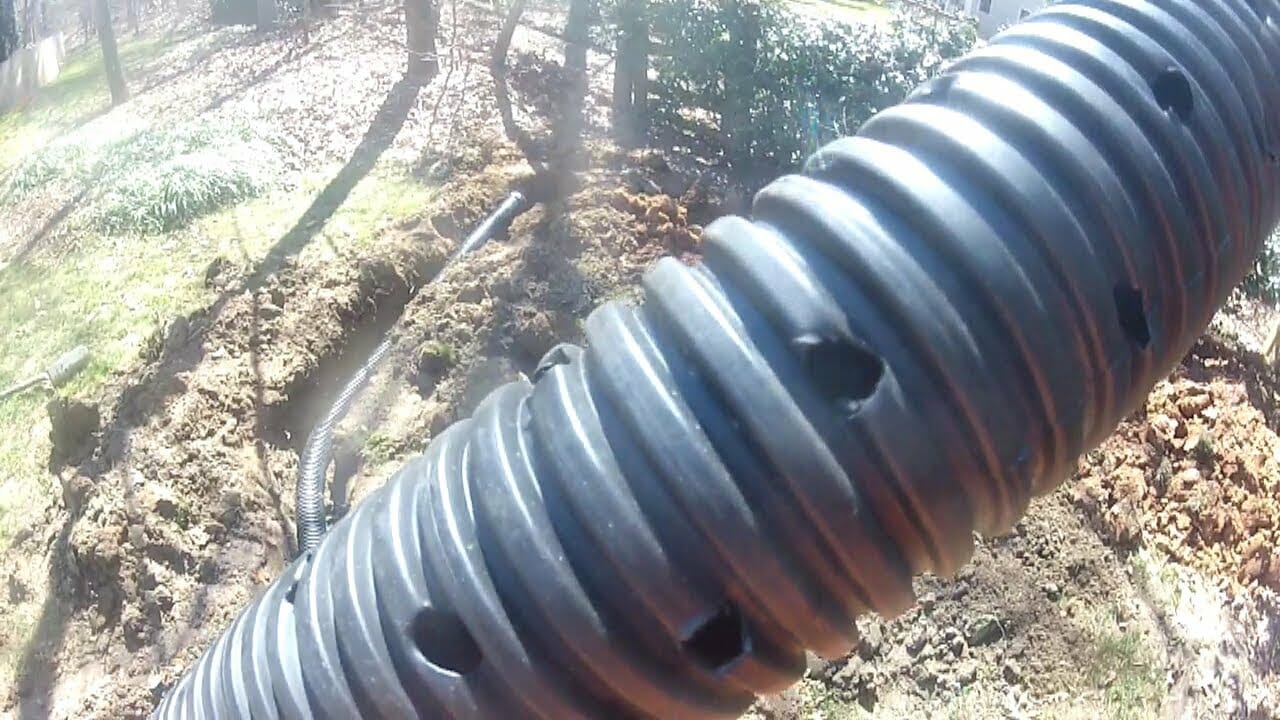
Some homeowners incorrectly aim the pipe’s openings in the wrong direction. There is reasoning to this mistake, though.
As far away from their home as possible is where they want the water to filter. They will thus aim the holes away from their residence. Water doesn’t function that way, though.
The pipe’s holes should be facing downward instead. The water level in the French drain should be kept as low as possible. The only method to get this result is by angling the drain holes in the pipe downward.
Avoiding to Deal with Roots

The most common reason for drain clogs, collapses, and failures is roots from adjacent trees or plants. The same issue applies to French drains, and ignoring it is a mistake.
In the landscaping industry, we make every effort to prevent roots from undoing the work. Water flows via French drains, attracting various plants that deepen their roots.
It is advised to fill the trench with appropriate linen material, add several inches of grave, and check the weeping tile for a cover that will prevent blockage in order to resolve this problem.

